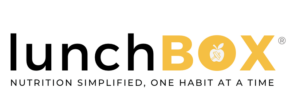October 25, 2023
If you’re tired of yo-yo dieting, and want to [finally!] lose the weight and keep it off… this is for you.
However, you may not like what you’re about to hear because it’s some pretty basic stuff and it requires patience.
No magic never-before-heard-of diet schemes.
No extremes and no promises of miracle results.
Just simple basic pillars of good nutritional. I know – boring, right? But it works. So here you go, my friend.
STEP 1: Know Your Numbers
How much you eat is a crucial piece of the fat loss puzzle. Even if you are eating super healthy food all day every day, the reality is that if you are eating 3000 calories per day, but only burning 2000 calories, you will NOT lose weight. There’s some truth to calories in – calories out. Of course, it’s not the whole story, but it’s a big part of it.
You must be in a caloric deficit to shed body weight/fat. The trick is to create the right amount of a deficit. Too big of a caloric deficit, for too long, will have your physiology freaking out and putting your body into fat-storage mode instead of fat-burning mode. A 15-20% caloric deficit is recommended – this typically equates to about a 300-400 calorie deficit (below daily maintenance calories) for a woman and a deficit of about 500-600 calories per day for a man.
The ratio of macronutrients within your calories (how much protein, carbs, and fats) also plays a role to support your body’s ability to regulate hunger hormones, metabolism, etc. Generally speaking, slightly reduced carbs and increased protein best supports fat loss.
PLEASE DO NOT use a free online calculator to determine how many calories and macros you should be eating. They almost always have you eating 1200 calories a day – WAY too low for safe and sustainable weight loss. Remember the key is to create a moderate deficit that won’t have your body going into fat-storage mode and you diving into an entire pizza because your hunger is getting the best of you!
Instead, reach out to us or other qualified sports nutritionist (sports nutritionists deal with the numbers game all the time!) for help with this one. Truly, given the starvation diets that so many people fall victim to, if all you ever did was get expert guidance on working out your numbers – it will be one of your best investments ever in your own health!
ps: we can also help you with determining how you’ll hit and track your numbers once you know what they are.
STEP 2: Eat Good Quality Real Food
Step 1 is all about the quantity of food you’re eating. Step 2 is all about the quality. This matters too – because even if you’re hitting your numbers to a tee, if it’s all coming from crap low-nutrient food as opposed to good quality, nutrient-rich food that supports how your body works – well, the body will respond very differently.
The very definition of metabolism is the sum of all metabolic/or physiologic processes in your body. That means your digestion, hormone production, nervous system, respirations – literally everything that goes on in your body! Guess what supports those systems in the body? Nutrients. Vitamins, minerals, anti-oxidants, etc. And where do those nutrients come from? Real food. Processed, packaged foods are stripped of many of their nutrients in the ‘processing’ process. We could dive deep into all the science and studies to support this, but that’s been done and I’m trying to give you big picture here.
ps: bonus perk of eating real food – volume for volume, it has way less calories than processed poor quality foods. So you can get 500 calories in a 3 oz bag of potato chips that’ll have you hungry again in an hour, or get the same 500 calories in a dinner of 3oz chicken breast, a cup of roasted sweet potatoes and a side of fresh veggies that will satiate you for hours!
STEP 3: Spread Your Food Intake Out
Step 1 is food quantity. Step 2 is food quality. Step 3 is food timing. Let’s take the example of eating those bang-on right amount of 2000 calories per day. Let’s say you’re eating all those 2000 calories in nothing but good quality real food. But… you’re eating pretty much all of them from 5pm onward. Again, your body will respond very different to those calories when they’ve been withheld all day and then loaded in at nighttime.
Remember the fat-storage mode I alluded to earlier when referring to deprivation diets? This is kindof the same thing. Your body is being deprived during the day. You are burning more energy than you’re taking in, and the body is responding to this physiologically in ways that are not working in your fat-burning favor. Those metabolic processes that support your goals are gonna be negatively impacted.
Again, there are loads of studies with regards to timing. Although everyone is different, it is consistently observed that those who fuel their bodies regularly throughout the day as their bodies are burning energy tend to have less late-day hunger and cravings, improved energy and focus (aka motivation), and improved weight management.
_________
SUMMARY:
So there you have it – what we at BUILD Nutrition call the 3 Pillars of Good Nutrition.
- Quantity
- Quality
- Timing
This is what we start with in our work with our clients. Get these three boring, but highly effective pillars down pat and the watch as the fat starts to melt off – slowly and sustainably, just as it should!
Need help getting started? Reach out to us at BUILD and book your complimentary consult to chat about your goals.
Our lunchBOX Gamified Nutrition Challenges help you create and build the nutrition basics to support your goals for life!
The science, the whys, and all the how-to’s… every day in a user-friendly and fun mobile app, so you can build the lifelong habits you need to build your best body, from the inside out.
Check out the lunchBOX!
How to Safely & Sustainably Lose Weight
The entire contents of this website are based upon the opinions of Build Holistic Nutrition. Please note that Build Nutrition is not a dietitian, physician, pharmacist or other licensed healthcare professional. The information on this website is NOT intended as medical advice, nor is it intended to replace the care of a qualified health care professional. This content is not intended to diagnose or treat any diseases. Always consult with your primary care physician or licensed healthcare provider for all diagnosis and treatment of any diseases or conditions, for medications or medical advice, as well as before changing your health care regimen.
© BUILD NUTRITION 2025. ALL RIGHTS RESERVED. PRIVACY POLICY
Go ahead, creep us on social. You know you want to!

